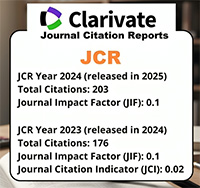Electrocardiography repolarization abnormalities are characteristic signs of acute chagasic cardiomyopathy.
Resumen
Chagas disease is a tropical parasitic disease caused by the protozoan Trypanosoma cruzi (T. cruzi), whose reemergence as oral outbreaks is currently a public health problem in Venezuela. T. cruzi infection induces myocardial damage; which according to the microvascular theory, is derived from parasite-mediated disruption of the endothelium, inducing platelet aggregation and ischemia. In order to determine whether ventricular repolarization disorders observed in human patients are characteristic signs of the disease that can be reproduced in NMRI mice; we studied 12 patients with a well documented diagnosis of acute Chagas disease, based on epidemiological, clinical, parasitological and molecular data. Also, T. cruzi isolates from the blood of human patients from other Venezuelan geographical regions were characterized and inoculated in albino NMRI mice. A standard 12-lead and bipolar electrocardiogram configuration were done in human patients during the acute phase of the disease and in mice, after three weeks of infection. Results in human showed repolarization disorders, characterized by: negative, bimodal or biphasic T waves, ST segment depression or elevation and early repolarization. In mice a significant increase in T wave amplitude, increased QT interval duration and elevation or depression of ST segment were observed. These findings were evidenced in all infected mice, suggesting that electrocardiographic repolarization abnormalities in a well documented clinical and epidemiological context are signs that increase the sensitivity for the diagnosis of acute Chagas´ disease.





















